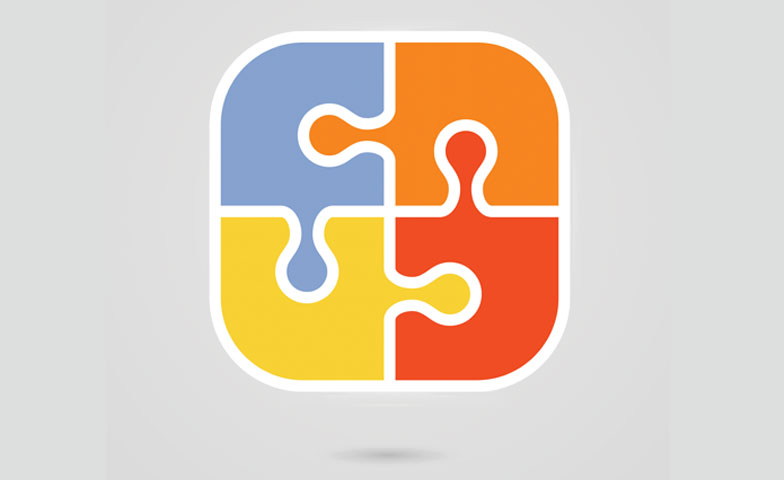Changing the classroom structure can be as effective as differentiating content.
When I began teaching at Konawaena Middle School, supported by a degree in middle level education, I understood that each student had a combination of strengths and challenges and that mixing these varied abilities not only created groupings that could support themselves academically but also reflected the true nature of the greater society.
However, I did not know how to challenge my high-achieving students when I also had kids in the class who read or computed at a second-grade level.
Throughout my first few years of teaching, I tried several strategies. Most of these had to do with “dumbing down” content so that it was accessible to lower-level learners. The thought behind these efforts was that it was important for students to get some understanding of the content, even if it was an elementary understanding.
Of course these efforts did nothing to challenge the abstract thinkers and naturally curious students who made up the “top” of the class. In the end, none of the content-focused scaffolds made much of a difference in the success of my students. Struggling students still struggled and accelerated learners were still bored.
Early Experimentation
After about 10 years of teaching, some gifted mentor teachers and I began using performance tasks connected to simulations to measure student achievement. By constructing activities that allowed students to “walk in the shoes” of people associated with the different content subjects and measuring student understanding through a scaffolded set of assessment tools, we were able to challenge our high achievers to express their learning in ways that forced them out of their comfort zone while making the content concrete for everyone in the class.
My favorite example was a unit on immigration based on the experiences of people going through Ellis Island. Students assumed the identity of a European immigrant entering the United States during the late 19th and early 20th centuries. Students kept a diary and wrote a reflective essay, which we used to measure their understanding.
Although overall, the students’ writing displayed a wide range of performances, the experiences students shared were authentic and eerily reminiscent of the primary sources used throughout the unit. I understood that by scaffolding structures rather than content, we more effectively met the needs of all of our students.
Creating Structures
Since then, the influence of publishing companies and the subsequent focus on standardized testing has put pressure on all of us to “teach to the test.” For a lot of new teachers, this has made heterogeneous grouping an artifact of the ’90s. They want to create “leveled groupings” that allow them to teach one thing in one way in each of their classes.
To me, this idea is based on a flawed presumption. In every class, no matter the level, the strengths and challenges for each student are unique. Given the ever-evolving creature that is the young adolescent, ideas that were successful on Monday may make little impact on Tuesday. The best we might do is to create structures within our classes and develop instructional activities that give all students the opportunities to learn.
Today, my classes are organized in table groups. In this way, students can have small-group peer discussions about questions before we discuss answers as a class. In fact, no question is discussed as a class without allowing for small-group discussions. Students who are quick to formulate answers can share them and students who may lack understanding can get clarification in a relatively low-stress format.
These groups are supported by a random-selection process using table colors and seat numbers. This holds all students accountable to share ideas they have generated themselves or ideas they heard. Groupings can be shuffled to allow focused instruction for the few students who need extra support in a specific skill.
Another structure I’ve incorporated with the help of our special education department is the use of adapted notes. Konawaena Middle School is an AVID school, so we use the Cornell Notes template. The notes are taken directly from our class text—the language is identical to that of the text but there are blanks that must be filled in by students. In this way, students are exposed to formal academic language without having to struggle with summarizing information on the fly.
Lower-level learners are required to generate questions for each section of the notes and to use answers to these student-generated questions to summarize the reading. This process is valuable in that the end result of this note taking is identical to that of the general education learners in the room.
The most important structures within my class are the hands-on learning experiences that my grade-level partner and I have developed to support textual information.
Without a concrete experience on which to hang content, I’m not sure any student can truly understand the topics that are covered. It is important to take time and plan for experiences that illustrate through active learning, ideas that are covered in the curriculum.
Experimentation, simulation, and dramatization are some of my favorite hands-on learning activities. These activities, however, must be connected to some sort of reflection that connects it to the content being studied. Without this reflection, and the thinking it requires to complete it, the value of the experience is greatly diminished.
Keys to Success
In the end, it is important to realize that no one strategy, structure, or technique is ever 100% successful 100% of the time. Flexibility and adaptability are the key to creating a classroom environment accessible to all learners.
